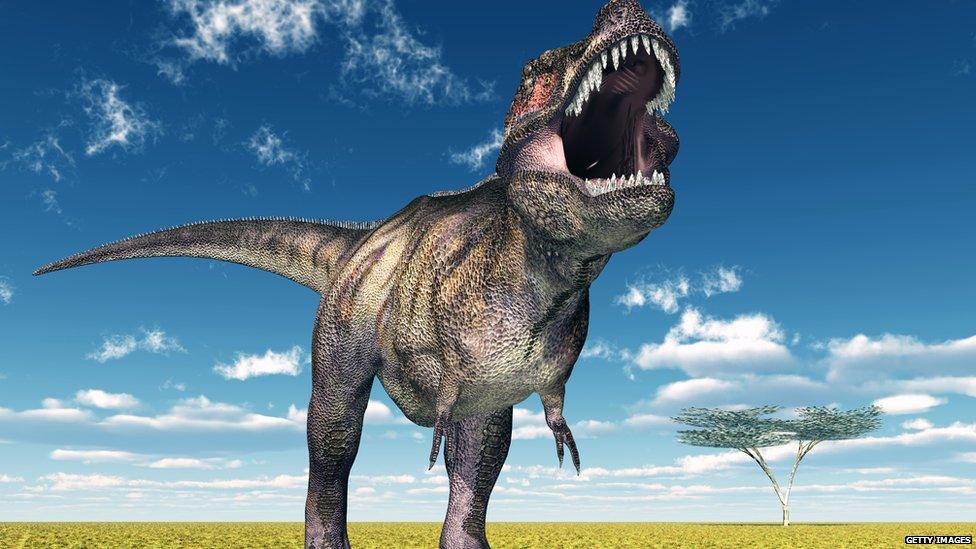Mighty T. rex 'walked rather than sprinted'
- Published

T. rex was a fierce carnivore
The size and weight of a T. rex would have prevented it from moving faster than 20km/h (12mph), research suggests.
University of Manchester scientists used a new computer simulation to assess the speed of the massive biped.
Based on T. rex's muscles alone, the model came up with a maximum speed of 30km/h, but this dropped to 20km/h when skeletal strength was assessed too.
Had it moved from a brisk walk to a sprint, the dinosaur's legs would have snapped under the weight of its body.
"T. rex is everyone's favourite dinosaur, and palaeontologists have been arguing for years about how fast it could run because this would tell us something about its hunting style and the way it caught its prey,'' said Prof William Sellers.
''This project used a highly realistic computer simulation to predict how T. rex moved, and it shows that running would have been impossible because its skeleton just isn't strong enough.
''That means that T. rex was actually quite slow and therefore not a pursuit predator.''
Hollywood makeover
Fossil footprints had already hinted that the mighty dinosaur was not as agile as its Hollywood image suggests.
However, Dr Eric Snively, of UW-La Crosse, US, who was not involved in the research, said it would still have been a scary creature.
The top speeds calculated for T. rex ''are still beyond those of most fast human joggers or distance runners and would be rather frightening to behold'', he said.
Referring to a scene in the sci-fi film, he added: ''It might well have caught Jeff Goldblum in Jurassic Park, had he stayed outside the Jeep and in the slippery mud.''
The research used sophisticated methods and tremendous computing power to calculate speeds
Prof Sellers said: "We can basically say that running was unlikely in any of the big predatory dinosaurs, but that doesn't mean that the smaller ones were not fast.
"That means that as it grows up, T. rex would get larger and slower and we would expect to see the hunting behaviour change.
"This really helps fill out the picture of what life was like in the cretaceous [period], when we have large numbers of dinosaurs roaming around."
The study is published in the journal Peer J.
Follow Helen on